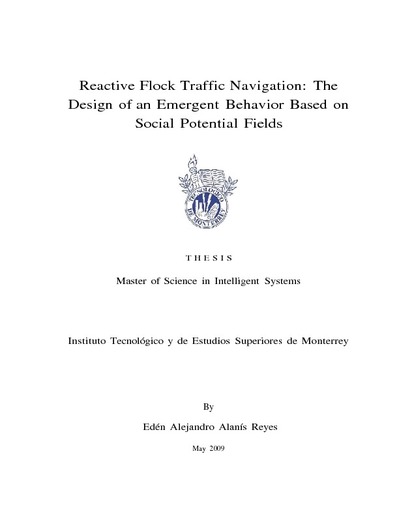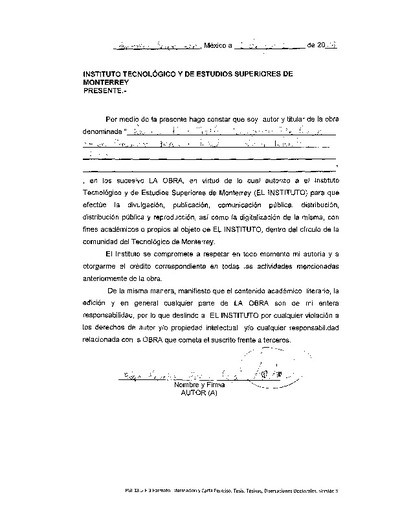| dc.contributor.advisor | Breña Pinero, Ramón F. | |
| dc.creator | Alanís Reyes, Edén Alejandro | |
| dc.date.accessioned | 2015-08-17T10:16:35Z | en |
| dc.date.available | 2015-08-17T10:16:35Z | en |
| dc.date.issued | 2009-05-01 | |
| dc.identifier.uri | http://hdl.handle.net/11285/569195 | en |
| dc.description.abstract | Urban traffic management is a recurrent problem in big cities nowadays, due to
different issues like the increasing number of cars that enter the city roads, making the
demand greater than the roadway’s capacity. Therefore, the need to control urban traffic arises with high priority, in order to decrease side effects like high fuel consumption
resulting in high vehicle emissions.
Currently, traffic is mainly controlled by traffic lights, static signs and electronic
boards, which provide important information about traffic flow, accidents or other
related data. Besides, in some places, there have been introduced more advanced
schemes like intelligent traffic signal coordination programs; however, this approach brings only 1% of delay reduction [25], which does not represent an efficient solution.
Additionally, there are several treatments that are aimed to gain more benefits from
the infrastructure and often lead to very high delay reductions, but some of them (the
overpass, for instance) are very expensive.
In recent years, some other high-level approaches have been proposed, making use
of Multiagent Systems (MAS) techniques, which have proven to be very efficient and
promissing regarding their evaluation results. One of such innovative mechanisms is
the “Flock Traffic Navigation based on Negotiation” method (FTN) [4]. Inspired by
nature, this method proposes a mechanism for vehicles to gather up into groups, in
order to get a speed bonus that enables them to travel faster, thus reducing congestion
levels.
The present research work explores a reactive approach to the FTN model, which
aimes to overcome specific issues detected on this mechanism, as well as to serve as
an alternative solution which will enable an interesting comparative analysis between a
deliberative solution against a reactive one. Furthermore, this might lead to the design
and development of a hybrid urban traffic management method.
The proposed solution, called Reactive Flock Traffic Navigation (rFTN, for short),
describes an emergent behavior, which is embedded in vehicles and designed to make
them navigate under the FTN paradigm. In order to achieve this, several mechanisms
have to be performed by each car, within the rFTN calculations. Each one of this
workings are explained.
This document also presents experimental data, which is aimed to both explore
and validate the performance of the proposed solution model. In this phase, the rFTN
was compared against traditional and advanced methods for the traffic management
problem. | |
| dc.language | spa | |
| dc.publisher | Instituto Tecnológico y de Estudios Superiores de Monterrey | |
| dc.rights | info:eu-repo/semantics/openAccess | |
| dc.rights.uri | http://creativecommons.org/licenses/by-nc-nd/4.0 | * |
| dc.subject.classification | Area::INGENIERÍA Y TECNOLOGÍA::CIENCIAS TECNOLÓGICAS::PLANIFICACIÓN URBANA::OTRAS | es_Mx |
| dc.title | Reactive Flock Traffic Navigation: The Design of an Emergent Behavior Based on Social Potential Fields-Edición Única | en |
| dc.type | Tesis de maestría | |
| dc.contributor.department | Tecnológico de Monterrey, Campus Monterrey | en |
| dc.contributor.committeemember | Sánchez Ante, Gildardo | |
| dc.contributor.committeemember | Astengo Noguez, Carlos | |
| dc.contributor.committeemember | | |
| dc.contributor.mentor | Acevedo Mascarúa, Joaquín | |
| refterms.dateFOA | 2018-03-17T08:39:23Z | |
| refterms.dateFOA | 2018-03-17T08:39:23Z | |
| dc.identificator | Campo||7||33||3329||332999 | |


